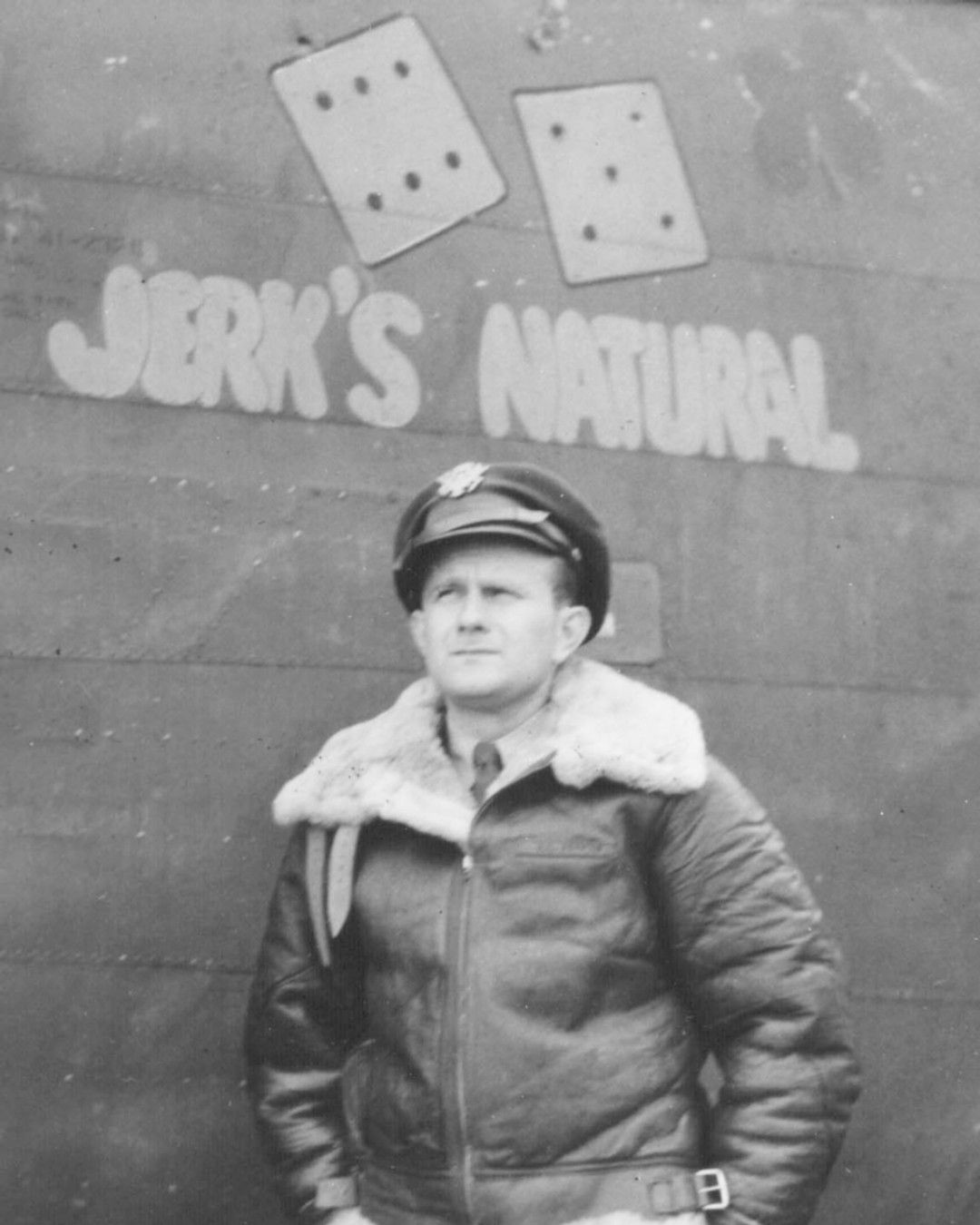John Louis "Jack" Jerstad was born on February 12, 1918, in Racine, Racine County, Wisconsin. He was the son of Arthur Henry Jerstad and Alice Bell Conner Jerstad.
John served as a Major in the 93rd Bombardment Group (Heavy), 9th Army Air Force, European Theater of Operations, flying B-24 Liberators. He had completed more than his tour of missions and was no longer directly connected with the 93rd Bomb Group. When he heard of the upcoming low-level bombing mission against the oil refineries at Ploesti, Romania (Operation Tidal Wave), he volunteered to lead a formation. On August 1, 1943, three miles from the target, his bomber (tail #42-40994; "Hell's Wench") was badly damaged by enemy ground fire and set on fire. More than 230 antiaircraft guns, supported by many barrage balloons, smoke pots, and German fighter planes, were in the area of the refineries. Ignoring the fact he was flying above a field suitable for a forced landing, he kept on course. After the bombs were released on the target, the fire in his ship became so intense that it made further progress impossible. The B-24 crashed into the target area, killing all on board. On this mission, fifty-four aircraft never returned; he was awarded the Medal of Honor posthumously on October 28, 1943.
MEDAL OF HONOR CITATION
For conspicuous gallantry and intrepidity above and beyond the call of duty. On 1 August 1943, he served as pilot of the lead aircraft in his group in a daring low-level attack against enemy oil refineries and installations at Ploesti, Romania. Although he had completed more than his share of missions and was no longer connected with this group, so high was his conception of duty that he volunteered to lead the formation in the correct belief that his participation would contribute materially to success in this attack. Maj. Jerstad led the formation into attack with full realization of the extreme hazards involved and despite withering fire from heavy and light antiaircraft guns. Three miles from the target his airplane was hit, badly damaged, and set on fire. Ignoring the fact that he was flying over a field suitable for a forced landing, he kept on the course. After the bombs of his aircraft were released on the target, the fire in his ship became so intense as to make further progress impossible and he crashed into the target area. By his voluntary acceptance of a mission he knew was extremely hazardous, and his assumption of an intrepid course of action at the risk of life over and above the call of duty, Maj. Jerstad set an example of heroism which will be an inspiration to the U.S. Armed Forces.
Source of information: www.findagrave.com, www.abmc.gov, www.mightyeighth.org

